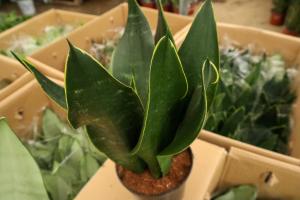How Far Should a Tree be Planted from a House?
Planting trees around your house can add beauty, shade, privacy, and other aesthetic and functional benefits to your property. However, trees can also pose some risks and challenges, especially if they grow too close to your house or other structures. Therefore, it's important to consider the appropriate distance and location for planting trees around your house. In this article, we'll explore some factors and guidelines to help you determine how far a tree should be planted from your house.
Factors to Consider When Planting Trees Near a House
Before you decide where and how to plant a tree near your house, you should assess the following factors:
The mature size and shape of the tree
The root system and soil moisture requirements of the tree
The proximity of utility lines, driveways, sidewalks, and other hardscapes
The direction of prevailing winds and potential storm damage
The amount of sunlight, shade, and water available in the planting area
The laws, codes, and regulations of your local government and homeowners association
Based on these factors, you can determine whether a certain tree species and location are suitable for your property, and how far the tree should be planted from your house or other structures.
Guidelines for Planting Trees Near a House
While there is no universal rule or formula for how far a tree should be planted from a house, there are some general guidelines and recommendations to follow:
Plant small trees or shrubs within 10 feet of the house, and large trees at least 20 feet away from the house.
Plant trees that are compatible with the prevailing soil, moisture, and sunlight conditions in your yard.
Plant trees that have a non-invasive root system or that can be contained by barriers or pruning.
Plant trees at a safe distance from utility lines, driveways, sidewalks, and other structures to avoid potential damage or obstruction.
Plant deciduous trees on the south and west sides of the house to provide shade in the summer but allow sunlight in the winter, and evergreen trees on the north and east sides of the house to block winds and provide privacy year-round.
Consult with a certified arborist or landscape designer to choose, place, and maintain trees on your property.
By following these guidelines, you can minimize the risks and maximize the benefits of planting trees around your house. However, keep in mind that these guidelines are not absolute and may depend on the specific conditions of your site and the goals of your landscaping. Therefore, it's important to use your judgment and common sense when deciding how to plant trees near your house.
Potential Risks and Solutions of Planting Trees Near a House
While trees can offer many benefits to your property and the environment, they can also pose some risks and challenges when they are planted too close to a house or other structures. Here are some of the potential risks and solutions to consider when planting trees near a house:
The roots of a tree may interfere with the foundation, plumbing, or other underground structures of a house. To prevent this, choose a tree species with non-invasive roots and plant it at a safe distance from the house or use a barrier to contain the roots.
The branches of a tree may touch the roof, windows, or other parts of a house, causing damage, scratching, or blockage. To avoid this, choose a tree species that fits the height and shape of the planting area and prune it regularly to maintain its structure.
The leaves, fruits, or sap of a tree may clog gutters, attract pests, stain surfaces, or cause allergies or irritations. To address this, choose a tree species with low litter and maintenance requirements and clean up any debris or mess regularly.
The tree may fall or break during a storm, causing damage or injury to the house or people. To prepare for this, choose a tree species that is wind-resistant or has a strong root system, and inspect the tree regularly for signs of damage or disease.
By understanding these risks and solutions, you can make informed decisions about planting trees near your house and minimize any potential negative impacts.
Conclusion
Planting trees around your house is a great way to enhance your landscaping, property value, and quality of life. However, it's important to take into account various factors and guidelines when deciding how far a tree should be planted from your house or other structures. By choosing appropriate tree species, locations, and maintenance practices, you can enjoy the benefits of trees without exposing yourself to unnecessary risks and complications.

 how many times do yo...
how many times do yo... how many planted tre...
how many planted tre... how many pine trees ...
how many pine trees ... how many pecan trees...
how many pecan trees... how many plants comp...
how many plants comp... how many plants can ...
how many plants can ... how many plants and ...
how many plants and ... how many pepper plan...
how many pepper plan...































